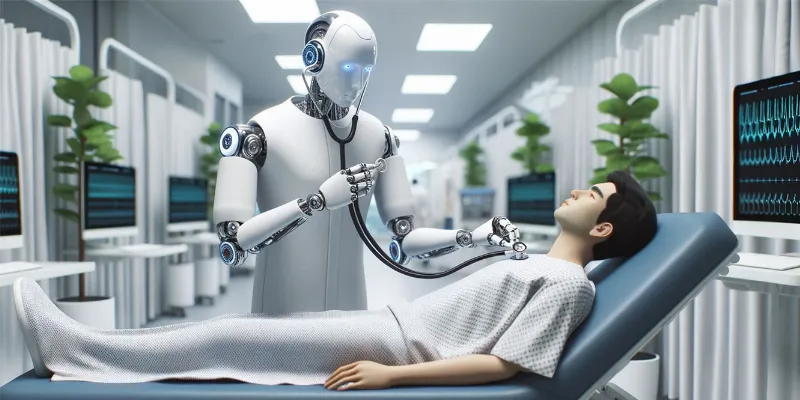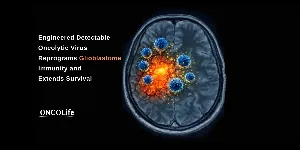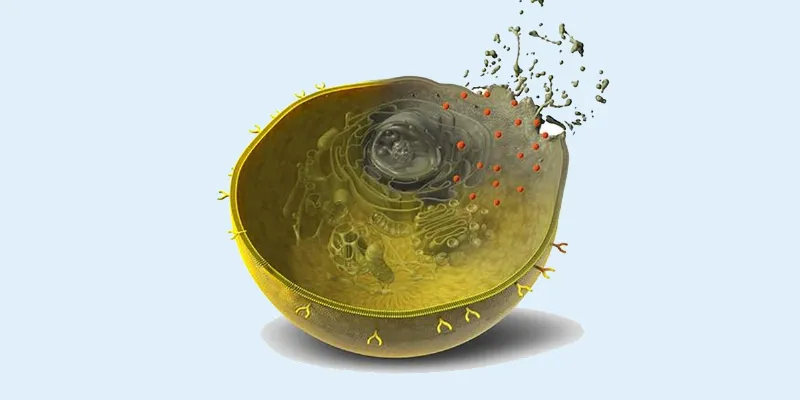New AI Tool Diagnoses Heart Diseases with Remarkable 97% Accuracy

12 October 2023
A newly developed artificial intelligence (AI) model has the potential to transform how doctors detect heart diseases. Researchers at Stevens Institute of Technology have developed an AI tool for detecting heart disease with a 93% sensitivity and 97% accuracy rate within 10 seconds from audio heart recordings. The tool can identify multiple coexisting valvular diseases, offering a comprehensive diagnosis.
Ordinary stethoscope examinations detect only 44% of cases. This advanced algorithm can pinpoint up to five different valvular diseases simultaneously and revolutionizing early detection in primary care.
Traditionally, doctors have relied on stethoscopes to listen to the heart's valves, hoping to discern the 'lub-dub' sounds that might hint at a malfunction. However, amid the natural symphony of bodily noises such as the rush of blood, breathing, and digestive sounds, detecting valvular heart disease (VHD) becomes challenging. This has led to a significant number of undiagnosed cases, with research suggesting that only 44% of VHD cases are detected using standard stethoscope examinations. This gap in early detection has had a profound impact, costing the healthcare system over $42 billion annually.
Developed to process 10-second recordings taken directly from a patient's chest using a contact microphone, the AI model is impressively accurate. According to findings published in The Lancet Microbe, the AI tool boasts a sensitivity of 93% and specificity of 98%. These figures indicate not only a high rate of accurate detections but also a minimal number of false positives.
“In the realm of healthcare, the limitations of standard stethoscope examinations are evident. It is imperative that we invest in advanced diagnostic tools to bridge this gap and ensure early detection and treatment for all patients. Our ability to detect multiple diseases simultaneously was a key innovation in this research. We aren’t just showing that there’s a valvular problem — we’re able to identify the constellation of problems a patient is suffering from,” said Arash Shokouhmand, lead author of the paper.
The significance of this AI tool extends beyond its technical prowess. As the original research abstract in The Lancet Microbe underscores, many primary care physicians lack access to sophisticated echocardiography machines. This AI-driven diagnostic method offers a chance to bridge this gap, potentially ensuring that fewer VHD cases go unnoticed in primary care settings.
In an era where technology and healthcare are becoming increasingly intertwined, this new tool exemplifies the potential of harnessing AI for medical advancements. As the team at Stevens Institute of Technology looks to expand their system's capabilities and bring it to doctors' offices, many will be listening intently — not just to their hearts, but to the promise of a new era in cardiac care.
Diagnosis of Coexisting Valvular Heart Diseases Using Image-to-Sequence Translation of Contact Microphone Recordings
Abstract / Objective: Development of a contact microphone-driven screening framework for the diagnosis of coexisting valvular heart diseases (VHDs). Methods: A sensitive accelerometer contact microphone (ACM) is employed to capture heart-induced acoustic components on the chest wall. Inspired by the human auditory system, ACM recordings are initially transformed into Mel-frequency cepstral coefficients (MFCCs) and their first and second derivatives, resulting in 3-channel images. An image-to-sequence translation network based on the convolution-meets-transformer (CMT) architecture is then applied to each image to find local and global dependencies in images, and predict a 5-digit binary sequence, where each digit corresponds to the presence of a specific type of VHD. The performance of the proposed framework is evaluated on 58 VHD patients and 52 healthy individuals using a 10-fold leave-subject-out cross-validation (10-LSOCV) approach. Results: Statistical analyses suggest an average sensitivity, specificity, accuracy, positive predictive value, and F1 score of 93.28%, 98.07%, 96.87%, 92.97%, and 92.4% respectively, for the detection of coexisting VHDs. Furthermore, areas under the curve (AUC) of 0.99 and 0.98 are respectively reported for the validation and test sets. Conclusion: The high performances achieved prove that local and global features of ACM recordings effectively characterize heart murmurs associated with valvular abnormalities. Significance: Limited access of primary care physicians to echocardiography machines has resulted in a low sensitivity of 44% when using a stethoscope for the identification of heart murmurs. The proposed framework provides accurate decision-making on the presence of VHDs, thus reducing the number of undetected VHD patients in primary care settings.











Comments
No Comments Yet!